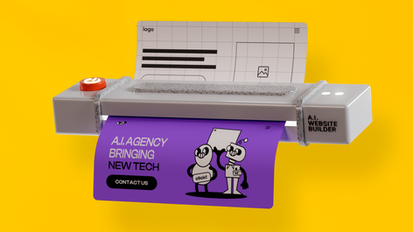April May 2025 Trending Web and Graphic Design Solutions
April May 2025 Trending Web and Graphic Design Best Practices
April May 2025 Trending Web and Graphic Design
In today’s digital age, having a professional and visually appealing website is crucial for any business or individual looking to establish an online presence. One of the key components in creating a website is using a template, which serves as the foundation for the layout and design of the site. Website templates are pre-designed web pages that can be easily customized to fit the specific needs and branding of a business. In this article, we will explore the importance of website templates and how they can benefit individuals and businesses alike.

April May 2025 Trending Web and Graphic Design Checklist
April May 2025 Trending Web and Graphic Design
What is SEO?
SEO is the process of optimizing your website in order to improve its visibility in search engine results. By using relevant keywords and creating high-quality content, you can increase your website’s ranking in search engine results pages (SERPs). This, in turn, can drive more organic traffic to your website, leading to more leads and conversions.
Types of SEO
There are three main types of SEO: on-page, off-page, and technical. On-page SEO involves optimizing your website’s content and structure, including keyword research, meta tags, and internal linking. Off-page SEO refers to strategies used to promote your website outside of your own website, such as backlinking and social media marketing. Technical SEO involves optimizing your website’s backend, including site speed, mobile-friendliness, and crawlability.
Keyword Research
Keywords are the foundation of any successful SEO strategy. By researching and targeting the right keywords, you can attract the right audience to your website. Start by using keyword research tools such as Google Keyword Planner or SEMrush to find relevant keywords with high search volume and low competition. Once you have a list of keywords, incorporate them into your website’s content, meta tags, and URLs.
Content Creation
Content is king when it comes to SEO. High-quality, relevant content can drive traffic to your website and improve your search engine ranking. Create engaging blog posts, articles, and videos that provide value to your target audience. Use your targeted keywords strategically throughout your content, but avoid keyword stuffing, as this can negatively impact your SEO efforts.
On-Page Optimization
On-page optimization involves optimizing your website’s content and structure to improve its visibility in search engine results. Use relevant keywords in your meta tags, headings, and content. Create unique, descriptive meta titles and meta descriptions for each page on your website. Improve your website’s user experience by optimizing its loading speed, mobile-friendliness, and navigation.
Off-Page Optimization
Off-page optimization involves promoting your website outside of your own website to improve its authority and credibility. Build backlinks from reputable websites in your industry by guest posting, submitting your website to online directories, and participating in forums and communities. Use social media to share your content and engage with your audience.
Technical SEO
Technical SEO involves optimizing your website’s backend to improve its crawlability and indexing by search engines. Improve your website’s loading speed by minifying CSS and JavaScript files, compressing images, and enabling browser caching. Make sure your website is mobile-friendly and responsive, as Google gives preference to mobile-friendly websites in search results. Create a sitemap and submit it to search engines to help them find and index your website’s pages.
Monitoring and Analysis
Once you have implemented your SEO strategies, it’s important to monitor and analyze their performance. Use tools like Google Analytics and Google Search Console to track your website’s traffic, keywords, and ranking in search engine results. Analyze your data regularly to identify trends, optimize your strategies, and improve your website’s performance.
What is a Web Developer?
A web developer is a professional who specializes in building websites and web applications. They are responsible for the technical aspects of a website, including coding, design, and functionality. Web developers work closely with clients to understand their needs and create customized websites that meet their specific requirements. They are also responsible for ensuring that websites are user-friendly, easy to navigate, and perform well on different devices and browsers.
Web developers can specialize in different areas of web development, such as front-end development, back-end development, or full-stack development. Front-end developers focus on the design and user experience of a website, using languages such as HTML, CSS, and JavaScript. Back-end developers work on the server-side of a website, managing databases and ensuring that websites run smoothly. Full-stack developers have expertise in both front-end and back-end development, allowing them to work on all aspects of a website.
Skills Required for Web Developers
Web development is a challenging and dynamic field that requires a diverse set of skills. Some of the key skills needed to be a successful web developer include:
1. Proficiency in programming languages: Web developers should have a solid understanding of programming languages such as HTML, CSS, JavaScript, and PHP. They should also be familiar with frameworks and libraries such as React, Angular, and jQuery.
2. Design skills: Good design skills are essential for front-end developers, as they are responsible for creating visually appealing and user-friendly websites. Knowledge of design principles and tools such as Adobe Photoshop and Sketch is important for web developers.
3. Problem-solving abilities: Web developers need to be skilled problem solvers, as they often encounter technical challenges when building websites. The ability to think analytically and troubleshoot issues is crucial in this field.
4. Communication skills: Web developers need to work closely with clients, designers, and other team members to create websites that meet their needs. Strong communication skills are essential for understanding requirements, providing updates, and resolving any issues that may arise.
5. Time management: Web development projects often have tight deadlines, so web developers need to be able to manage their time effectively and prioritize tasks to meet deadlines.
Importance of Web Development
Web development plays a critical role in today’s society, as websites are essential for businesses, organizations, and individuals to connect with their target audiences. Some of the key reasons why web development is important include:
1. Increased visibility: Having a strong online presence is essential for businesses to reach a wider audience and attract new customers. Websites allow businesses to showcase their products or services and provide valuable information to potential customers.
2. Credibility: A well-designed and professional website can enhance the credibility of a business or organization. Websites that are visually appealing, easy to navigate, and optimized for search engines are more likely to attract customers and build trust.
3. Accessibility: Websites are accessible 24/7, allowing businesses to reach customers at any time, regardless of their location. This accessibility can help businesses expand their reach and attract new customers from different parts of the world.
4. Competitive advantage: In today’s competitive market, having a well-designed website can give businesses a competitive edge. A user-friendly website that provides valuable content and a seamless user experience can help businesses stand out from their competitors.
5. Innovation: Web development is constantly evolving, with new technologies and trends emerging regularly. Web developers play a crucial role in driving innovation and creating websites that are responsive, interactive, and engaging for users.

April May 2025 Trending Web and Graphic Design FAQ
April May 2025 Trending Web and Graphic Design
In today’s digital age, having a visually appealing and user-friendly website is crucial for the success of any business. A well-designed website can help attract new customers, build credibility, and increase conversion rates. However, designing a website is not as simple as it may seem. It requires a strategic and systematic approach to ensure that the final product meets the needs and expectations of both the business and its target audience. In this article, we will discuss the website design process in detail, outlining the key steps involved in creating a successful website.
Step 1: Define the Purpose and Goals
The first step in the website design process is to clearly define the purpose and goals of the website. This involves identifying the target audience, understanding their needs and preferences, and determining the desired outcomes for the website. For example, is the website meant to generate leads, drive sales, provide information, or showcase products and services? By having a clear understanding of the purpose and goals of the website, you can better tailor the design and content to meet these objectives.
Step 2: Conduct Research
Once the purpose and goals of the website have been defined, the next step is to conduct research. This involves analyzing the competition, researching industry trends, and gathering insights into the preferences and behaviors of the target audience. By conducting thorough research, you can gain a better understanding of what works and what doesn’t in your industry, helping you make informed design decisions.
Step 3: Create a Wireframe
After conducting research, the next step in the website design process is to create a wireframe. A wireframe is a visual representation of the layout and structure of the website, showing the placement of various elements such as navigation menus, headers, footers, and content sections. Creating a wireframe allows you to plan the overall design and functionality of the website before moving on to the visual design phase.
Step 4: Design the Visual Elements
Once the wireframe has been finalized, the next step is to design the visual elements of the website. This involves creating a visually appealing and consistent design that reflects the brand identity and resonates with the target audience. Elements such as color scheme, typography, imagery, and layout are carefully considered to create a cohesive and attractive design that conveys the desired message and engages users.
Step 5: Develop the Website
After the visual design has been approved, the next step is to develop the website. This involves coding the design into a functioning website using HTML, CSS, and other programming languages. During the development phase, the website is tested for functionality, responsiveness, and compatibility across different devices and browsers to ensure a seamless user experience.
Step 6: Test and Optimize
Once the website has been developed, it is essential to test and optimize its performance. This involves conducting usability tests to identify any usability issues, testing load times to ensure fast page speeds, and optimizing the website for search engines to improve visibility and accessibility. By testing and optimizing the website, you can ensure that it meets the needs and expectations of users, leading to better engagement and conversions.
Step 7: Launch and Monitor
The final step in the website design process is to launch the website and monitor its performance. This involves deploying the website to a live server, promoting it to the target audience, and tracking key metrics such as traffic, engagement, and conversions. By monitoring the performance of the website, you can identify areas for improvement and make informed decisions to optimize its effectiveness over time.


